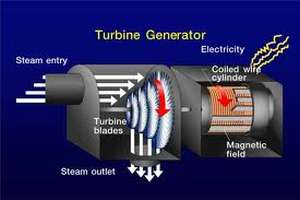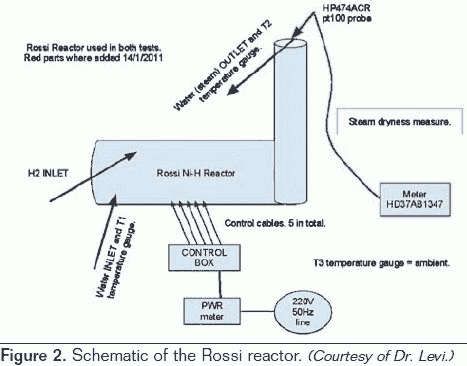600 Celsius - The Accelerating Evolution of Andrea Rossi's E-Cat
Andrea Rossi's cold fusion technology, called the E-Cat, has been developing rapidly over the past year. Currently, it is asserted that an extended test of a high- temperature module is taking place. What could the next evolutionary adaptation be for the Energy Catalyzer?
|
|
By Hank
Mills
Pure Energy Systems News
The development of a low cost, safe, abundant, and robust source of
energy is the goal of many researchers working on exotic technologies.
Such a source of energy -- if used appropriately -- could allow humanity
to survive the severe challenges facing our civilization. Although it is
not known to everyone, such a game changing technology already exists
and has been evolving rapidly over the past year.
Those individuals who frequently visit PESN already know that the name
of this revolutionary new technology is the E-Cat or "Energy Catalyzer."
It is a "cold fusion" or LENR (Low Energy Nuclear Reaction) technology
that emerged on the scene in January of 2011, and was invented by Andrea
Rossi. Since that time, Andrea Rossi has made significant progress
developing the technology, and getting it ready for commercial
applications.
For those who do not know, an E-Cat works by specially processed and
enriched (in isotopes Ni-62 and Ni-64) nickel powder being placed in a
small steel reactor core. In addition to the nickel powder, certain
catalysts are placed in the core, along with a small pellet that
releases and absorbs hydrogen gas. An electric resistor heats the
reactor core which induces hydrogen to be released from the pellet. A
radio frequency generator is then used to apply frequencies to the
contents of the core. The result is a number of different, but safe
nuclear reactions taking place that release huge amounts of energy in
the form of heat. No nuclear waste is produced, no radiation escapes the
core, but the heat produced can be harnessed to do work.
In 2011, when Andrea Rossi first introduced the E-Cat, the reactor was
only capable of staying "stable" at fairly low temperatures. At high
temperatures the nuclear reactions were more difficult to control, and
there could be a risk of a run away effect that had the potential to
make the reactor core "go dead" by melting the nickel powder. If that
happened, the reactor core would have to be re-fueled, and the old fuel
recycled or disposed of. Due to this possibility, most of the E-Cat
tests in 2011 utilized low temperatures. When steam was produced in one
of the many tests performed in 2011, it was usually kept at a low
temperature of perhaps a little over 100C.
However, Andrea Rossi has recently stated that an on-going test of a new
high temperature E-Cat module is taking place. According to him, this
new E-Cat module can produce a steady output of 600C steam. In fact, it
is asserted that the module being tested has been producing 600C steam
for over forty days! When the test is complete, data from it will be
posted on Rossi's blog,
The Journal of
Nuclear Physics.
 Reaching
a temperature of 600C is important, because it means that the E-Cat can
now produce steam that can be used to power modern turbines, such as
those used in ordinary fossil fuel burning power plants. It should be
noted that the vast majority of the electricity produced around the
world is generated by the utilization of steam at temperatures at or
below 600C. Basically, if the extended test of the high temperature
E-Cat is successful -- Andrea Rossi has indicated it has been successful
so far -- it means that cold fusion technology is now ready to power our
world.
Reaching
a temperature of 600C is important, because it means that the E-Cat can
now produce steam that can be used to power modern turbines, such as
those used in ordinary fossil fuel burning power plants. It should be
noted that the vast majority of the electricity produced around the
world is generated by the utilization of steam at temperatures at or
below 600C. Basically, if the extended test of the high temperature
E-Cat is successful -- Andrea Rossi has indicated it has been successful
so far -- it means that cold fusion technology is now ready to power our
world.
Another interesting bit of information about the new E-Cat is that it
utilizes even less nickel powder than previous designs. Instead of 50
grams of nickel (like some previous modules utilized) this new module
consists of one reactor core that utilizes 1.5 (one point five) grams of
nickel. This tiny amount of nickel is claimed to be enough to fuel an
E-Cat for six months or longer. Over that six months, the module would
be capable of producing a rated output of 10 kilowatts of constant heat
in the form of 600C steam. In torture tests, the same unit can safely
produce 20 kilowatts of output.
Finally, the physical size of the reactor core is said to be smaller
than previous designs. This is phenomenal, because some previous E-Cat
units had reactor cores of only 50 cubic centimeters, or about the size
of a D Cell battery. Those reactors had a rated output of 2.5 kilowatts,
which is only one fourth the rated output of the new reactor!
|
The specifications of the latest E-Cat module make it clear this
technology is rapidly evolving. According to Andrea Rossi, he is being
assisted by the engineer that has been contracted by his military
customer. Although this has not been stated plainly, it seems as if the
military customer's representative(s) are either involved in this test,
or at least observing it carefully. If the test turns out to be
successful, it is obviously a technology any military (unless they had
something even better in a black budget project somewhere) would want to
have access to.
Of course, there are low temperature home units and low temperature one
megawatt plants being worked on, but these high temperature E-Cats are
what really excite me. I find myself extremely eager to see the data
from the extended multi-month long test. Once the test data confirms the
claims that have been made, there will be no possible way to overstate
the significance of these high temperature E-Cat units. Simply put, they
are the holy grail of what cold fusion researchers and the entire exotic
energy community has been dreaming of for decades.
Consider the benefits this technology has to offer...
- Low-cost Fuel - Nickel, hydrogen, and cheap catalysts.
- High Power Density - Ten kilowatts of thermal power from a reactor core perhaps only 50CC or less in volume.
- High Temperature Output - Six hundred degree Celsius steam which allows for compatibility with state of the art, high efficiency turbines to generate electricity. Also, at this temperature it could be possible to use the steam to produce electricity via Stirling Engines or photothermalvoltaic panels.
- Safe Operation - No nuclear disaster is possible with this technology because no radioactive fuel is used, no nuclear waste is produced, and no radiation escapes the module.
- Portability and Continuous Operation - Unlike many other technologies, the E-Cat can be made small enough to be portable (even used to power vehicles) and can operate 24 hours a day regardless of weather conditions.
- No Pollution - The E-Cat technology does not emit green house gases, particulate matter, or other pollution into the atmosphere.
The benefits of the E-Cat technology as it is right now -- producing
600C steam -- are already staggering to think about. However, this
technology is still in an early stage of development. Once it hits the
marketplace, it will start evolving at an even more rapid rate.
If you look around online, there are already discussions about cold
fusion based batteries, and solid state devices. I think it is very
likely that ten years from now, someone could go to the store and pick
out a small E-Cat branded battery that would last for years, output
hundreds or thousands of watts, and could be used to provide constant
power for their home.
Of course, this is conjecture about the future, but the reality of our
current situation is that humanity has discovered a way to produce cheap
600C steam in a safe manner. This is something to get excited about. It
means that depending on how fast the technology is commercialized and
adopted, the fossil fuel age could be coming to an end in the not too
distant future.
With this technology, it could be possible to cheaply desalinate water
to turn deserts into farmland, power indoor farms that utilize
artificial lighting to grow food rapidly, lower everyone's power bill,
make transportation much more affordable, and totally change the
geo-political situation on this planet. With the E-Cat technology, we
could all work together to make this world a better place, and even be
capable of surviving black swan events -- like solar flares and asteroid
impacts.
We should all thank Andrea Rossi for all of his hard work developing
this technology, and his willingness to communicate with the public.
Unlike certain other companies, he regularly answers questions and is
willing to post test data. I think we should all keep a close eye on his
blog over the next few weeks, and stay tuned to PESN for the latest
updates.
Postscript
The first products utilizing the new high temperature E-Cat modules will
be most likely be large plants capable of producing an output one
megawatt -- or possibly more -- in the form of heat, or around two
hundred kilowatts of electrical power. This figure of two hundred
kilowatts of electricity is net power, and is what would remain after
the power to operate the unit has been subtracted. The greater the
efficiency of the turbine generator, the larger the net electrical
output would be.
These first high capacity products will probably be intended for medium
to large businesses, or industrial plants that would have engineering
staff present to operate the unit. We can assume a one megawatt (or 200
kWe) plant would fit in one standard container about twenty feet long
and eight feet wide. The turbine and generator would most likely fit
into another standard container. Most likely, there will be some room
set apart in one of the containers for a control panel and the display
of pressure, temperature, and other sensor readings. There may also be
some type of external mechanism to utilize any low grade waste heat that
is remaining after the conversion of the high temperature steam to
electricity, but this is speculation. Of course, there would be a system
in place to both deliver the electricity produced to the customer's
electrical infrastructure, and to divert a portion of the output to
maintain the operation of the device.
Andrea Rossi has stated that one of his goals is to make a high-capacity
electrical generating E-Cat plant capable of fitting into two standard
containers. These containers could then be shipped by cargo ship, plane,
truck, or train to customers.
P.P.S.
| DEAR FRIEND: [...] I AM GLAD YOU AND STERLING ARE WORKING TOGETHER AGAIN WARM REGARDS, ANDREA |
# # #
This story is also published at
Examiner.
www.pureenergysystems.com
PES Network, Inc.
Copyright © 2003 - 2012
